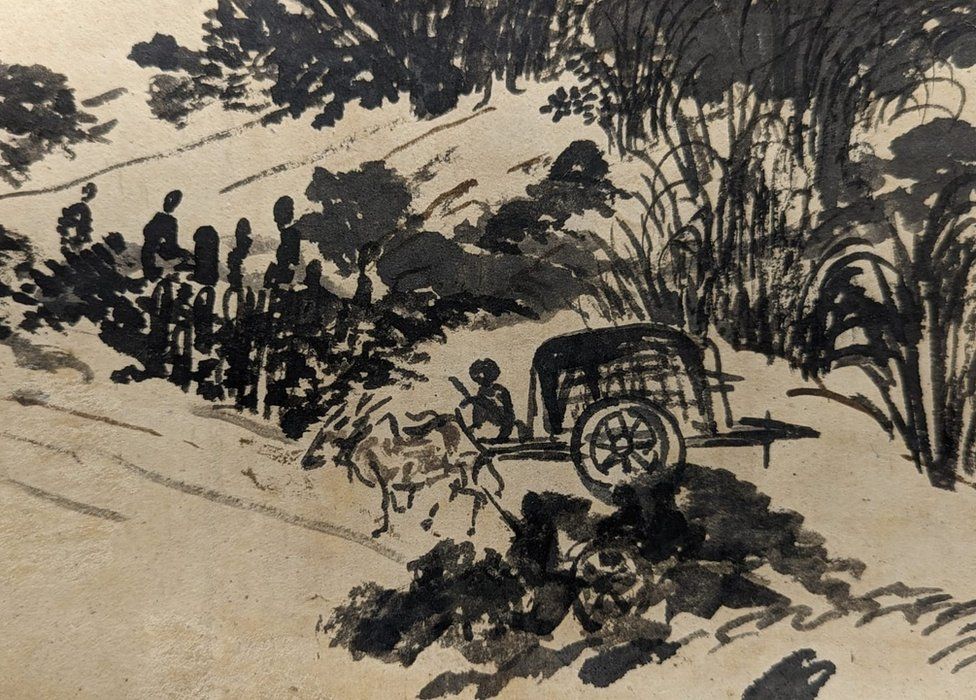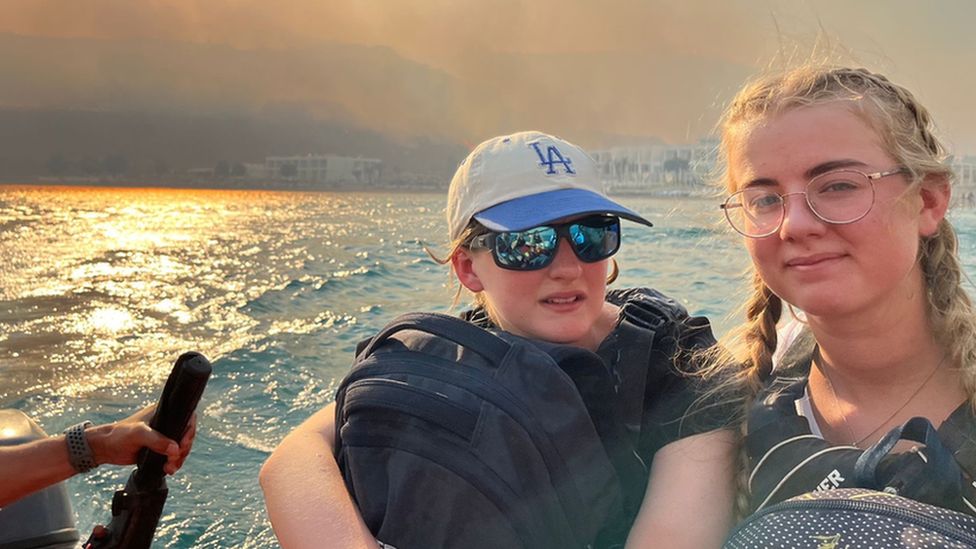In the city of his birth, Kolkata, a famous Indian blind artist's 44-foot-long Japanese-style handscroll has surfaced and is now being displayed in public for the first time.
Benodebehari Mukherjee, who was born in 1904, was severely myopic in one eye and blind in the other. At the age of 53, he was completely blind. Mukherjee, a landscape and fresco painter who passed away in 1980, produced ground-breaking works. He became known for defining modern art in 20th-century India. He was also a sculptor and muralist.
The scroll, which is only six inches wide, will be delivered in July to Santiniketan, the West Bengali university town established a century ago by Nobel Laureate Rabindranath Tagore, where Mukherjee studied and later taught. Scenes from Santiniketan is the title of the artist's longest scroll. .
Before arriving at its final location in Kolkata, where it is currently on display, the scroll was transferred into two different hands.
It appears that in 1929, Mukherjee either gave the scroll to Sudhir Khastagir, a Santiniketan art school graduate, or sold it to him. Khastagir later relocated to Dehra Dun to work as an art teacher at a prestigious institution. He gave the scroll to another artist, who later sold it for an undisclosed sum to Rakesh Saini, an archivist and proprietor of an art gallery in Kolkata, six years ago.
Mukherjee created this captivating scroll at the age of 20 using ink and watercolors on painstakingly layered sheets of paper. The artist who leads the viewer on a tour of Santiniketan in the first frame is depicted as a figure sitting beneath a tree. This is a common motif in Chinese and Japanese scrolls where carefully positioned figures direct our gaze. .
A journey through time and space that takes the viewer from right to left leads her into a forest of sal trees that are initially drawn in black ink and then gradually change to small hints of green that correspond to the passing of the seasons.
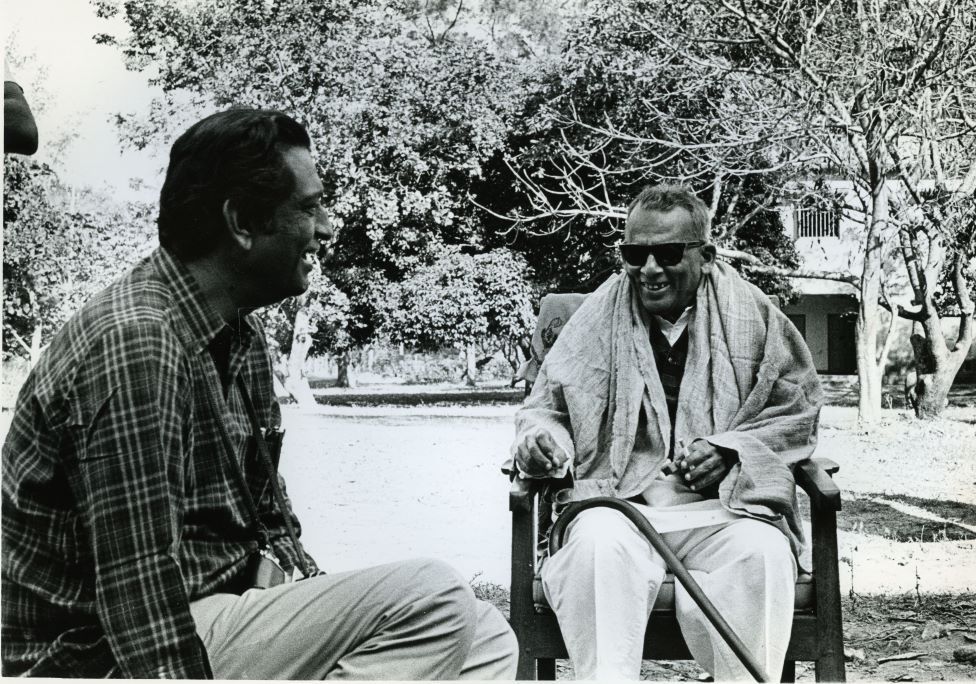
A man is passing in a bullock cart. The viewer halts in a village where people are making toddy, a local brew, by boiling date palm sap. While the once-lush tree leaves turn into an autumnal brown, the ripening paddy gives the rice fields light green hues. Winter brings a certain level of desolation, which is depicted in the final frame of the painting. khoai. , an area of laterite soil that resembles a canyon close to Santiniketan.
There are 22 human figures, 22 cattle, 3 chicken, 1 dog, and 1 bird on the scroll. Mukherjee uses expanses of emptiness to represent the land and the sky.
The artist's "solitude, a sense of isolation subtly expressed and presented," is pervasive in the scroll. . as a state of his life, without self-pity or resentment," observes renowned art historian Siva Kumar. He claims that the scroll "bears every indication of the artist's genius that blossomed in the following years.".
The depiction of the khoai, which was painted in the middle of the 1930s and is just over 10 feet long, was Mukherjee's longest piece until it was discovered.
One of India's greatest artists, Nandalal Bose, who oversaw the art school Kala Bhavan, served as Mukherjee's Santiniketan instructor. According to Siva Kumar, Bose had expressed concern to Tagore regarding a visually impaired art student. In response, Tagore said, "Let him be if he is sincere and interested. " .
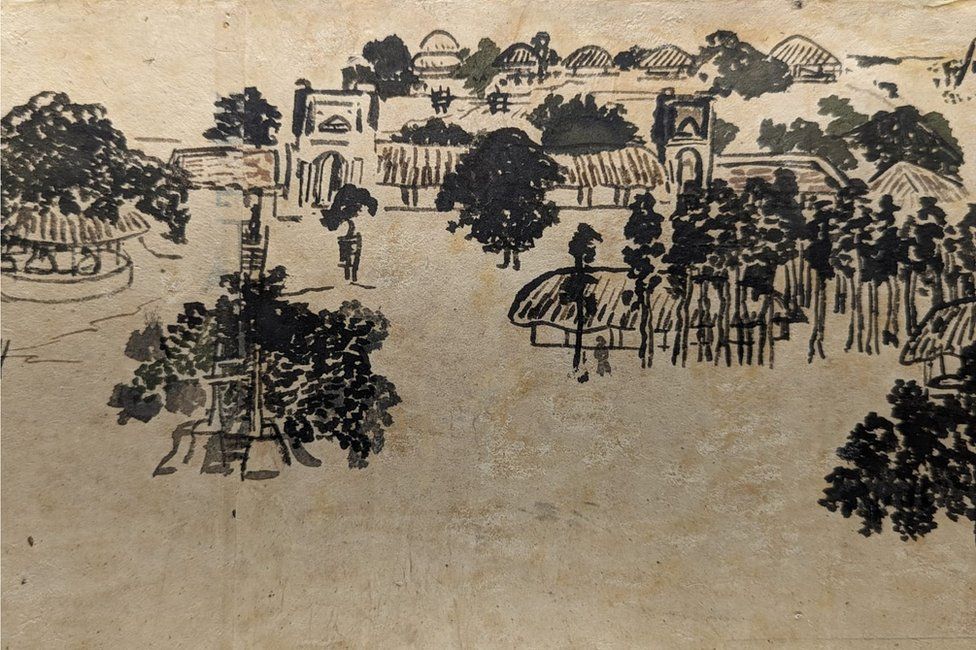
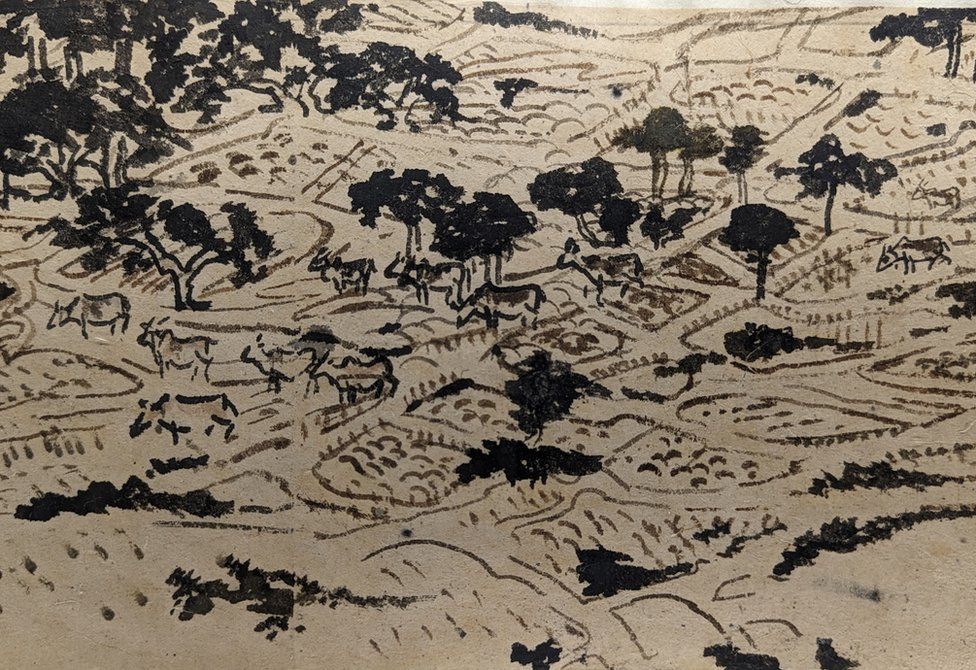
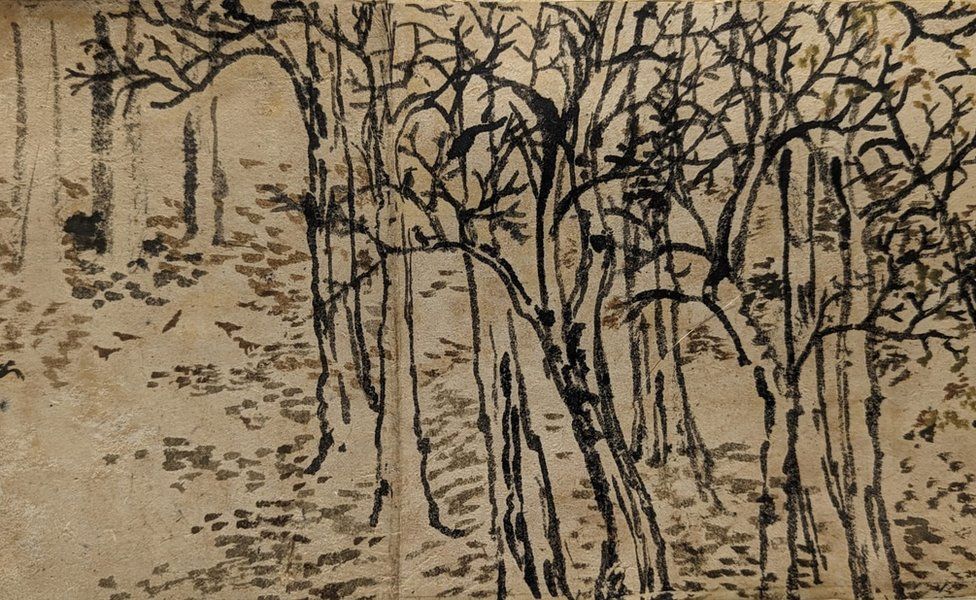
Mukherjee's Kala Bhavan students were almost as well-known as his teachers. Artists like KG Subramanyan, Somnath Hore, and Oscar-winning director Satyajit Ray were among them. The Inner Eye, a film by Ray about Mukherjee, was produced in 1972. The heartfelt tribute thrust the solitary artist and his creations onto the world stage. .
Prints of handscrolls that Tagore and Bose had brought back from their trip to Japan may have served as an inspiration for Mukherjee. According to Siva Kumar, Mukherjee was particularly drawn to the scroll's format because it offers some possibilities that other forms of art do not, such as the ability to depict the passage of time.
Instead of just standing and staring at a landscape, you can recreate the experience of walking through it. Normal landscapes have nature broken up. However, you can display both continuity and change in a handscroll. " .
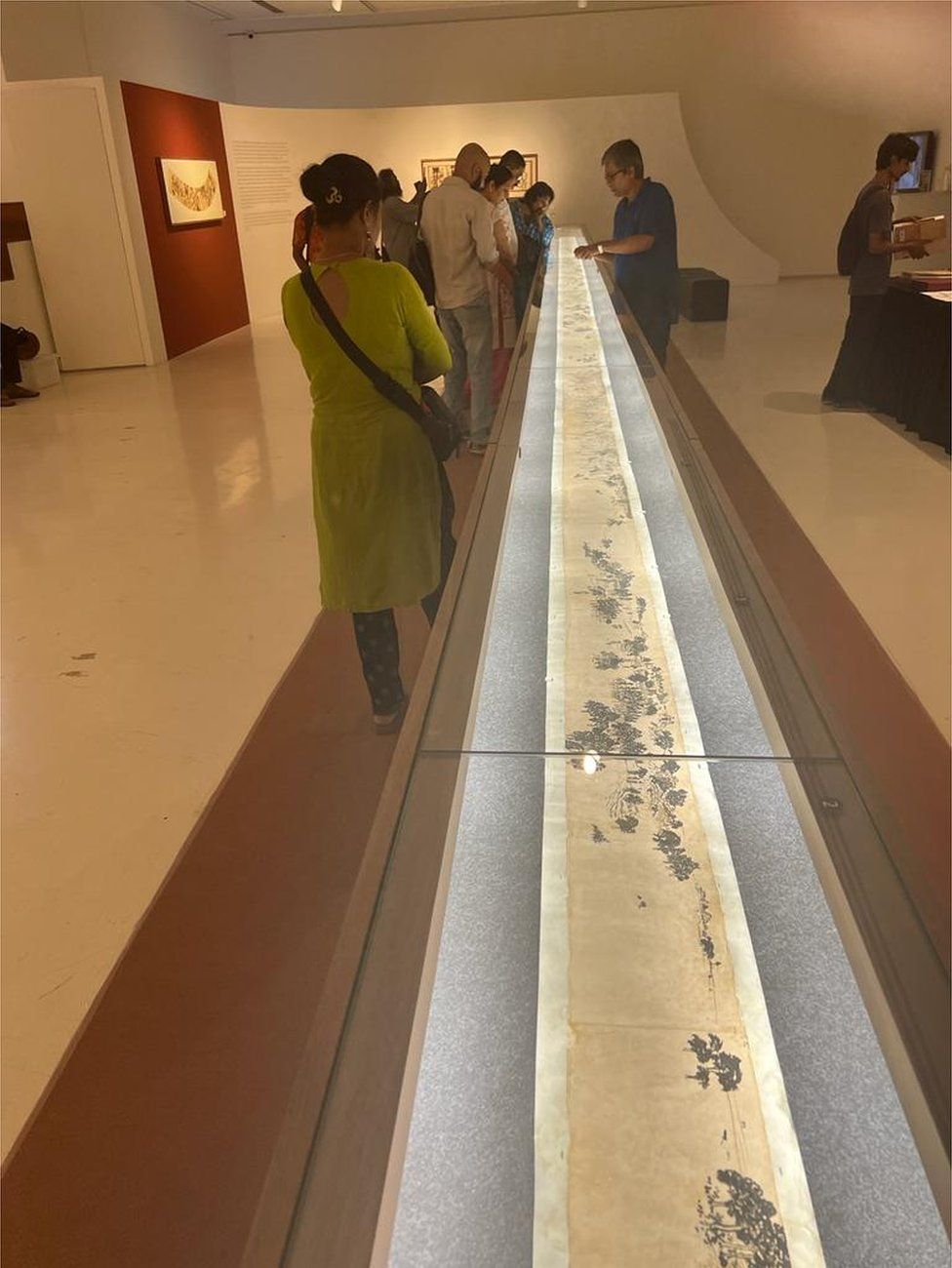
Where did the Scenes go for almost a century then?
The scroll was purchased from a collector by Rakesh Sahni, the proprietor of Gallery Rasa in Kolkata, in 2017. Mr. Sahni claims, "I could have displayed it earlier, but I lost three years to the pandemic. ".
Reproductions of Mukherjee's other scrolls, such as The Khoai, Village Scenes, and Scenes in Jungle, are also on display at the Kolkata exhibition. The Victoria andamp; Albert Museum in London is the owner of the final piece, which is painted on the semicircular pith of a banana tree.

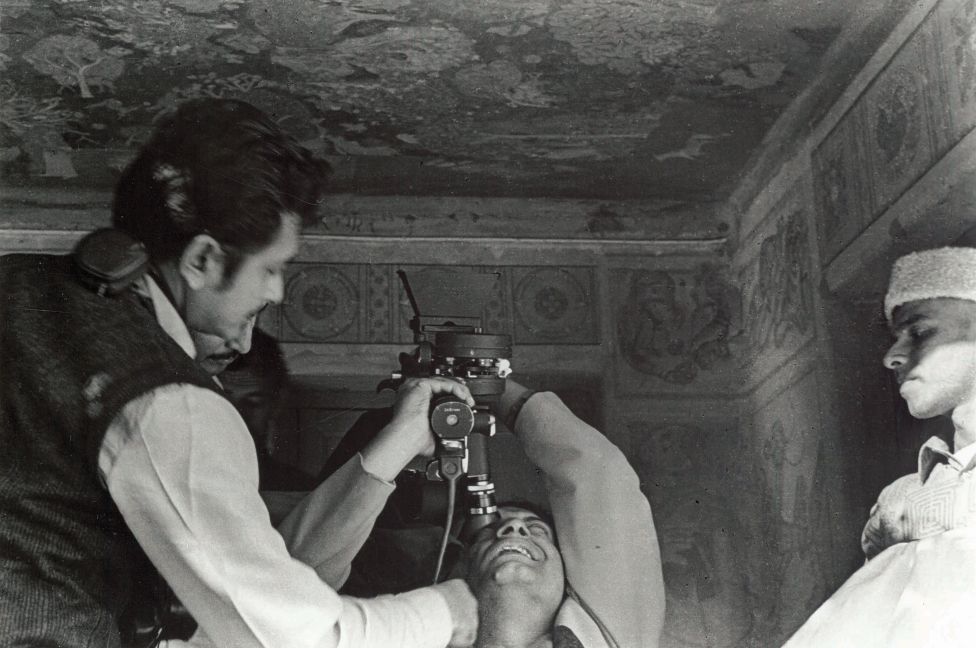
The frescoes on the walls and ceilings of the buildings in and around Kala Bhavan are among Mukherjee's other well-known creations at Santiniketan. The Lives of Medieval Saints on the walls of Cheena Bhavan, a Sino-Indian cultural studies center, are among the most well-known and stand at almost eight feet tall and an impressive 80 feet in length. Before the artist lost his vision, he completed the frescos and scrolls.
Mukherjee continued to produce murals, collages, and sculpture until the end with the same artistic skill as the works he had produced when he could still see with that one eye, even after surgery destroyed his functional myopic eye.
Mukherjee makes a rare comment about his vision impairment in Ray's documentary.
"Being blind is a novel sensation, experience, and state of being. " .
That is possibly Mukherjee's best obituary.
YouTube now hosts BBC News India. Click this. subscribe and view our features, explainers, and documentaries.

